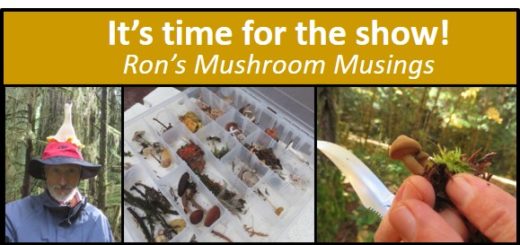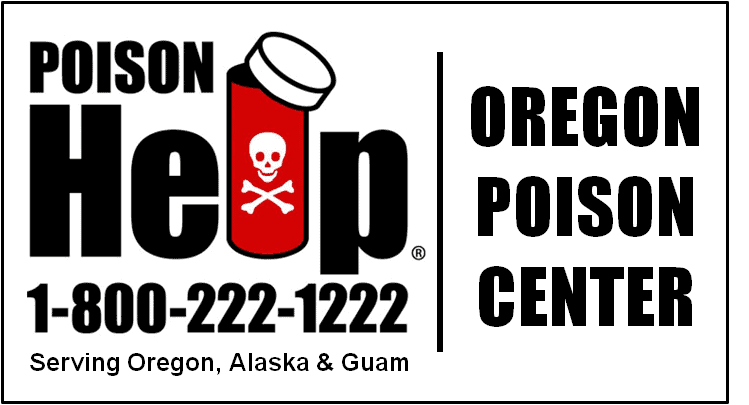2000 Mt. Pisgah Arboretum and Cascade Mycological Society Mushroom Show and Fall Festival: Mushroom Display Article for Tree Times
By Peg Boulay and Marcia Peeters
Despite a crispy, crunchy, mushroom-unfriendly fall, new and expanded education and
activity tables made the mushroom display at the 2000 Mt. Pisgah Mushroom Show and Fall Festival one of the best ever! Cascade Mycological Society joined Mt. Pisgah Arboretum as show sponsors, which meant even more volunteers and creative energy to help produce one of the premier mushroom shows in the West! The dry Autumn caused sporadic and unpredicable mushroom fruitings in western Oregon. But the persistence and knowledge of volunteer collectors resulted in a respectable mushroom display of 290 species. Twenty-six of these species had not been previously identified at the show.
Once again, we were fortunate to have expert help in identifying mushrooms and
answering visitors’ questions. We are very grateful to Dan Luoma & Joyce Eberhart from Oregon State University, Ankie Camacho from University of California Berkeley, and our local specialists Freeman Rowe, Joe Spivack, and several CMS members for sharing their expertise.
There is always much speculation as to what muchrooms will win the coveted “Best of
Show” prize. This year Ryan Turner’s spectacularly large and intricate Daedalea quercina was deemed best of the best. The 1st prize was awarded to several Phallus impudicus,
ranging in age from egg to fully mature, collected by Kyle Hammon and his students, Tad
Butler, Travis Marep, and Darcy Hulse, and 2st place went to to an impressively large
Boletus edulis collected by Aubrey Carney. As if finding these treasures wasn’t exciting
enough, the lucky winners were awarded ribbons and beautiful framed mushroom stamps from Mexico. Freeman Rowe, founder and judge of the Best of Show contest, generously donated the prizes.
The expanded educational tent proved popular with show-goers. There was more room for the “Edible and Poisonous” display, which was always crowded. This display allowed viewers to compare edible mushrooms with their non-edible look-alikes and ask questions on identification, finding edibles, tips on habitat for different species, and even favorite
recipes.
“Fun Facts about Fungi” was a new display that included information on fungal ecology,
especially relationships between fungi and plants (mychorrizae, mycotrophic plants) and the role of these relationships in plant establishment and growth. The display also featured some hands-on activities that particularly engaged kids. The activity area called “A Closer Look” provided 10x power magnifying lens and mushrooms with interesting details and textures to examine. We used a microscope and a videoscope, kindly provided by Lane Community College, to project images of mushroom spores. Spores are normally invisible to the unaided eye but are often interesting and ornate, which piqued the interest of our visitors.
The Lichen display was also expanded this year, with over 60 species identified. This
year’s “Cultural Use of Mushrooms” focused on cultivated medicinal mushrooms and included commercially-grown blocks of Ling Chi (Ganoderma lucidum) and Maitake (Grifola frondosa).
With the help of dedicated and patient volunteers we achieved another first, we
digitally photographed all of the mushrooms on display. These photographs will serve as a reference library, will help with future identification, and will someday be available to
the public through CMS’s webpage. We would like to thank Action Rentall & Party Time, who loaned us a 20′ x 20′ canopy that we used for a “behind the scenes” work area for mushroom identification and digital photography. We also used the work area to store odd, peculiar, and rare fungi waiting to be identified. We always need a place to put those lonely boxes of generic brown mushrooms – often belonging to the difficult genera Cortinarius, Russula, and Ramaria!
North American Truffling Society (NATS) participated again this year, displaying
different kinds of truffles and answering questions. Terry Gatchell also joined us again
to demonstrate pasteurization and innoculation techniques for home-grown mushrooms and sold his cultivation kits. Other vendors sold wild mushrooms and other “grow your own” kits, including shitake logs. Representatives from the Willamette and Siuslaw National Forests and the US Forest Service Pacific Northwest Research Station gave out free mushroom picking permits and information on collecting mushrooms on public land.
Among our innovations this year, we decided to leave the show up an extra day, hoping to
provide a learning experience for school groups. The LCC mycology students took advantage of the extra opportunity to study the mushrooms, but we were not able to line up schools at short notice. We plan on leaving the display up longer next year, and will invite schools in advance. We also hope to explore funding possibilities to assist school participation, as we were told that school field trip budgets have been slashed.
We are planning even more new displays and activities for next year, and perhaps a few surprises to celebrate the 20th Mt. Pisgah Mushroom Show and Fall Festival. See you next year!
The Cascade Mycology Society is grateful for the great energy, hard work, dedication,
and commitment of so many volunteers. The following volunteers helped create, set up, and staff the mushroom displays: Cameron Bergen, Bob Blanchard, Peg Boulay, Jim Boyd, Kendon Bright, Ron Hamill, Kyle Hammon, Russ Kelly, Krista Kennard, Cheshire Mayrsohn, Chris Melloti, Rebecca Meyer, Bruce Newhouse, Marcia Peeters, Dave Pilz, Jena Price, Freeman Rowe, Jeani Sapienza, Orin Schumacher, Karen Tate, Ryan Turner, Molly Widmer, the LCC Mycology students, and the dozens of people who collect mushrooms for the show each year.





